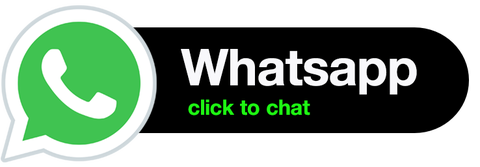DESIGNING LIFE SKILL – BASED ENGLISH READING MATERIALS FOR SECOND GRADE STUDENTS OF SMA NEGERI 1 PRINGGASELA
DOI:
https://doi.org/10.30812/humanitatis.v6i2.793Keywords:
Life skill; ReadingAbstract
This research aims to: developing life skill-based English reading materials design for the second grade students of SMA NEGERI 1 PRINGGASELA. The design used in this research is report design by using R&D ( Research and Development ) approach. The subjects of this research are the second grade students of SMA Negeri 1 Pringgasela in academic year 2016/2017. There are 35 students. In collecting data, the researcher uses two steps. First, the researcher distributed questionnaires into the students. Second, the researcher gathers data for conducting evaluation, opinion and suggestion from an English Teacher of SMAN 1 Pringgasela and an expert of designed materials. All responses and comments to the open questions were reviewed and grouped into some meaningful categories as they provide useful information for revising the product.
To determine the readability level of the texts used in new developed reading materials, the following are the categories of readability level and reader grade level according to Flesch Readability East Formula and Flesch-Kincaid Grade Level. Scores between 90.0 and 100.0, considered easily understandable. Scores between 60.0 and 70.0, considered easily understood. Scores between 0.0 and 30.0, considered easily understood.
The final product of the materials consists of a course material of Life Skill Based English Material and a teacher’s manual. Whole Language Reading provides rich input of reading strategies, variety of topics, concepts, texts, activities, tasks, and evaluations. Using this material makes reading more holistic and meaningful as it provides integration across language skills and subject areas.
Educational institutions need to provide a rich learning environment with a variety of reading sources, print and digital to provide opportunities for students to choose and determine reading materials that suit their needs.
References
Berkeley: RDR Books. Harwood, Nigel. 2010. English language teaching materials: Theory and practice. Cambridge: Cambridge University
Brolin, D.E. 1989. Life Centered Career Education: A Competency Based Approach. Reston, VA: The Council for Exceptional Children.
B. & Hitomi, M. 2010. Published research on materials development for language learning. In Tomlinson, B., & Masuhara, H. (Eds.), Research for materials development in language learning: Evidence for best practice. New York: Continuum International Publishing Group.
Borg W. R., & Meredith D. G. 1983. Educational research: An introduction. New York: Longman Inc.
Bravos, Kalli. 2010. Readability tests and formulas. Retrieved from http://www.ideosity.com/ 2010/01/14/readability- tests-and-formulas
Brown, H. D. 2007. Teaching by principles: An integrative approach to language pedagogy. New York: Pearson
Cypress: Creative Teaching Press, Inc. Gall, Meredith D., Joyce P. G, & Walter R. B. 2007. Educational research: An introduction. Boston: Pearson
Depdiknas. 2002. Pendidikan Berorientasi Kecakapan Hidup (Life Skill) Melalui Pendekatan Broad-Besed Education. Jakarta: Departemen Pendidikan Nasional.
Dubin, Fraida and Elite Olstain. 1986. Course design. Developing Programs and Materials for Language Learning. Cambridge: Cambridge University
Education, Inc. Goodman, K. 2005. What’s whole in whole language: 20th anniversary edition.
Education, Inc. Dick, W., Lou, C., & James, O.C. 2009. The systematic design of instruction. New Jersey: Pearson Education Upper
Graves, Kathleen. 2000. Designing Language Course: A Guide for Teachers. London: Heinle&Heinle Publisher.
Handayani, sri. 2009. Muatan life skills dalam pembelajaran di sekolah: upaya menciptakan sumber daya manusia yang bermutu. Presented in International Education Conference, UPI – UPSI, Malaysia. Universitas Pendidikan Indonesia.
Hedgcock, J. S., & Dana, R. F. 2009. Teaching readers of English: students, texts, and contexts. New York:
McDonough, J., & Christopher, S. 2005. Materials and methods in ELT: A teacher’s guide. Malden: Blackwell Publishing.
Moghadam, J.N. 2011. The importance of whole language approach in teaching English to intermediate Iranian EFL learners. Theory and Practice in Language Studies, 1(11), 1643-1654.
Masitoh, Dewi, Permasih. 2000. Studi Implementasi Kurikulum Berbasis Kecakapan Hidup (Life Skill) pada Jenjang Sekolah Dasar. Jurnal Penelitian Vol.10 No.2 Oktober 2009
Nation, I.S.P. 2009. Teaching ESL/EFL reading and writing. New York: Routledge, Taylor & Francis Group. Qiang, N, Martin, W., & Teng, H. (2008). China EFL: A new paradigm. Education in China: 21st century issues and challenges. New York: Nova Science Publishers.
Richards, Jack C. 2005. Curriculum development in language teaching. Cambridge: Cambridge University Press.
Richards, Jack.C and Theodore S. Rodgers. 2001. Approaches and Method in Language Teaching. Cambridge: Cambridge University press.
Richard, Jack. C and Willy A. Renandya. 2002. Methodology in Language Teaching: An Anthology of Current Practice. Cambridge. Cambridge University Press.
Routman, R. 1991. Invitations. Toronto: Irwin Publishing.
Sidek, Horison Mohd. 2012. EFL reading instruction: Communicative task-based approach. International Journal of Instruction, 5(2), 109-110.
Taylor, M. 2007. Whole language teaching is wholehearted activism. In Monica Taylor (Ed.), Whole language teaching, whole-hearted practice: Looking back, looking forward. New York: Peter Lang Publishers, Inc. Tomlinson,
Routledge, Taylor & Francis. Jolly, D., & Rod, B. 2011. A framework for materials writing. In Brian Tomlinson (Ed.), Materials development in language teaching. Cambridge: Cambridge University Press.
Selinger, Herbert and ElanaShohamy. 1989. Second Language Research Methods. Oxford. Oxford University
Saddle River. Eisele, B. 1991. Managing the whole language classroom: A complete teaching resource guide for K-6 teachers.
Tomlinson, B. 2000. Materials evaluation. In Tomlinson, B. (Ed.) Developing materials for language teaching. New York: Continuum.
Wang, P. 2011. The effect of computer-assisted whole language instruction on Taiwanese university students’ English learning. English Language Teaching, 4(4), 10-20.
Weaver, C. 1990. Understanding whole language from principles to practice. Toronto: Irwin Publishing.
















